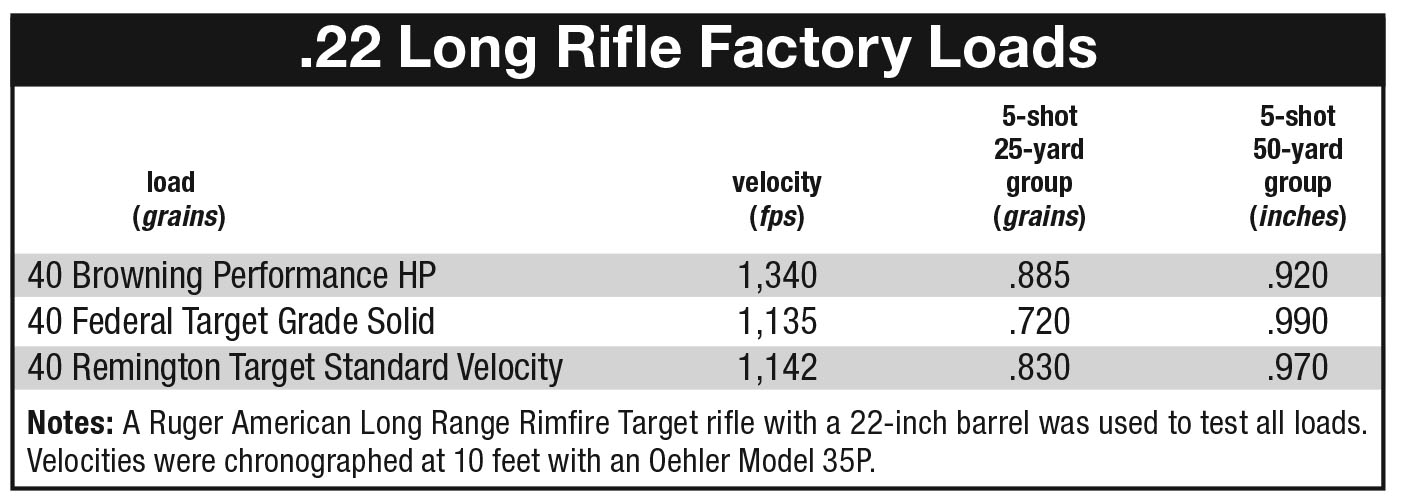Ruger American Rimfire Long-Range Target Rifle
The Newest Rifle in Ruger’s .22 Line of Long Guns
other By: Stan Trzoniec | January, 26
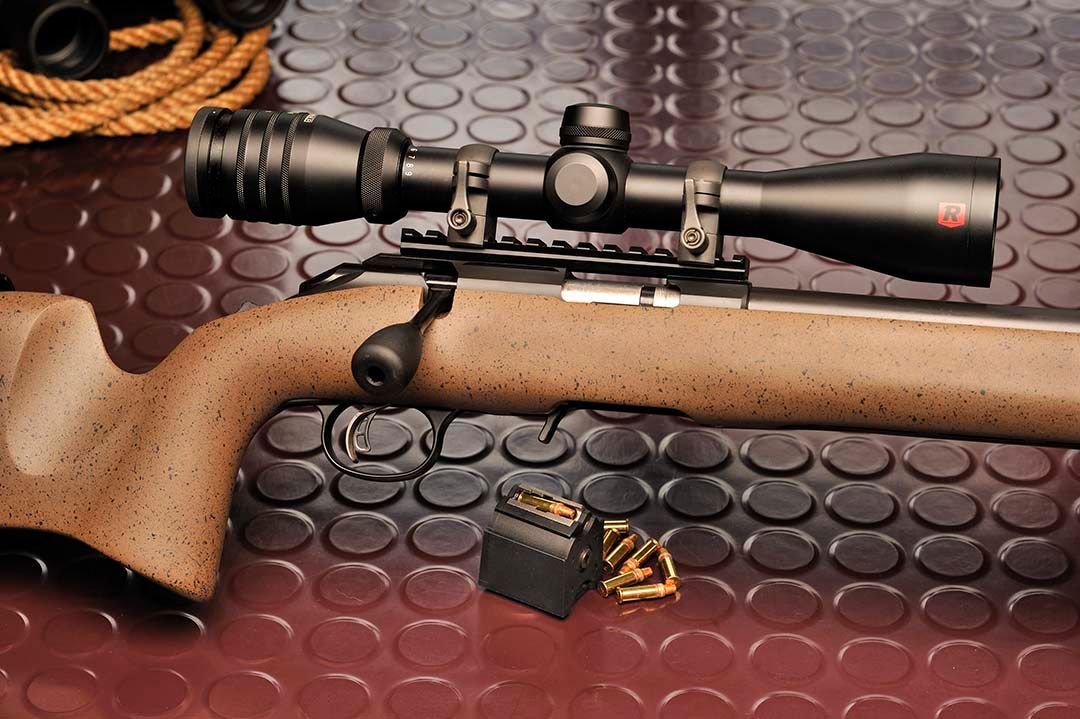
Over the past few years, rimfire rifles have started to set a standard of their own. They have developed looks that are more refined in style and design, they are more accurate and with ammunition companies following suit, they are more adaptable to a wider range of hunting and sporting chores. Like many sportsmen, I grew up on a bolt-action, single-shot Winchester that was my partner in the field for many of my younger years on the farm. With its ability to digest .22 Short, Long and Long Rifle cartridges, I could use the gun in the barn, at moderate ranges or longer distances for the wily woodchuck.
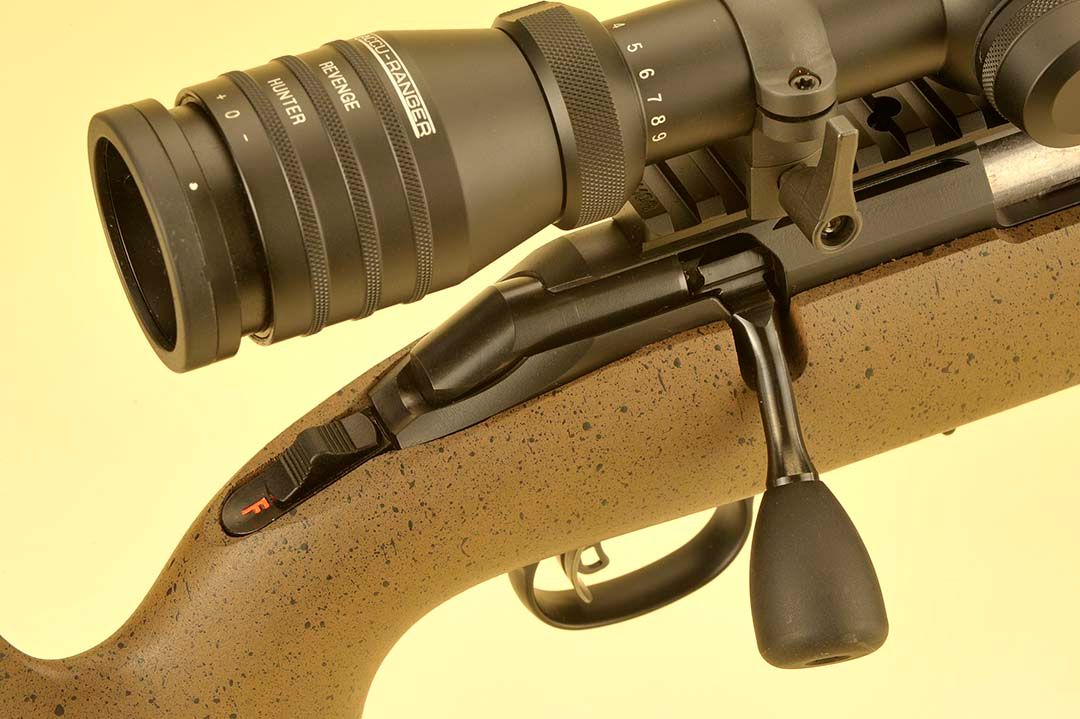
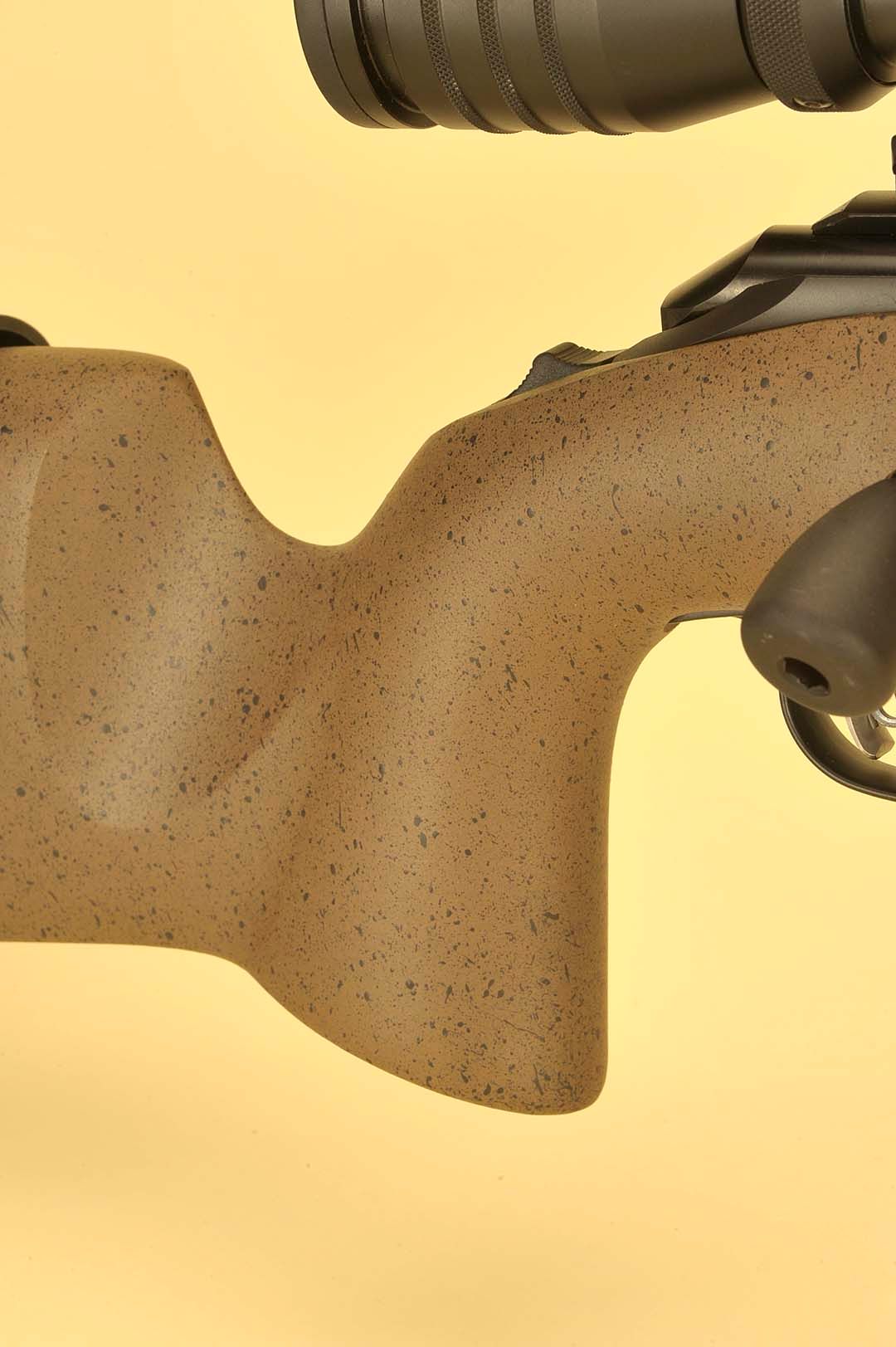
Today, everything has changed. Looking though the various gun publications and periodicals, it seems there is hardly a gun manufacturer that does not make a rifle chambered for the .22 rimfire. You can have your choice of a bolt, semiautomatic, pump, single shot in a more mundane gun with less frills, or perhaps a synthetic stock to the high-grade gun with fancy wood and a high polish on all the metal parts. Better yet, you can have a gun with the best of both worlds, perhaps more tuned into your specific needs or shooting style.
One of the more distinctive for the ultra-serious varmint hunter or the shooter who likes to put all his shots in one hole, is the new Ruger American Rimfire Long Range Target rifle. A mouthful of words to be sure, but let’s look at what actually makes this gun so special. Right out of the box, it surely looks like nothing Bill Ruger would have designed for his company’s lineup in the past. He was a conservative type of gentleman, witness to his likes of the Ruger No. 1, the older M77 or his pet Red Label shotgun. Talking to Ruger at past shows proved his steadfastness of his thinking that put his wares in gun shops across the country in short order.
The .22 rimfire cartridge is a crowd pleaser and the Ruger American advances this even more. While the basic design is featured in the budget aimed centerfire rifles, I for one, see it better executed in the rimfire guns. Right now, you have a choice of the Standard, Target, Compact, laminated wood Target, Camo (Go Wild stock) and this Long Range model with most available in the .22 Long Rifle, .22 Winchester Magnum Rimfire (WMR) and the high-stepping .17 HMR. The choices never seem to end with adjustable synthetic stocks, threaded barrels, magazine options, adjustable combs, carbon or stainless actions, fixed sights, or the option for scope mounting via a factory installed Picatinny rail, plus the quality that makes a Ruger, well simply, a Ruger!
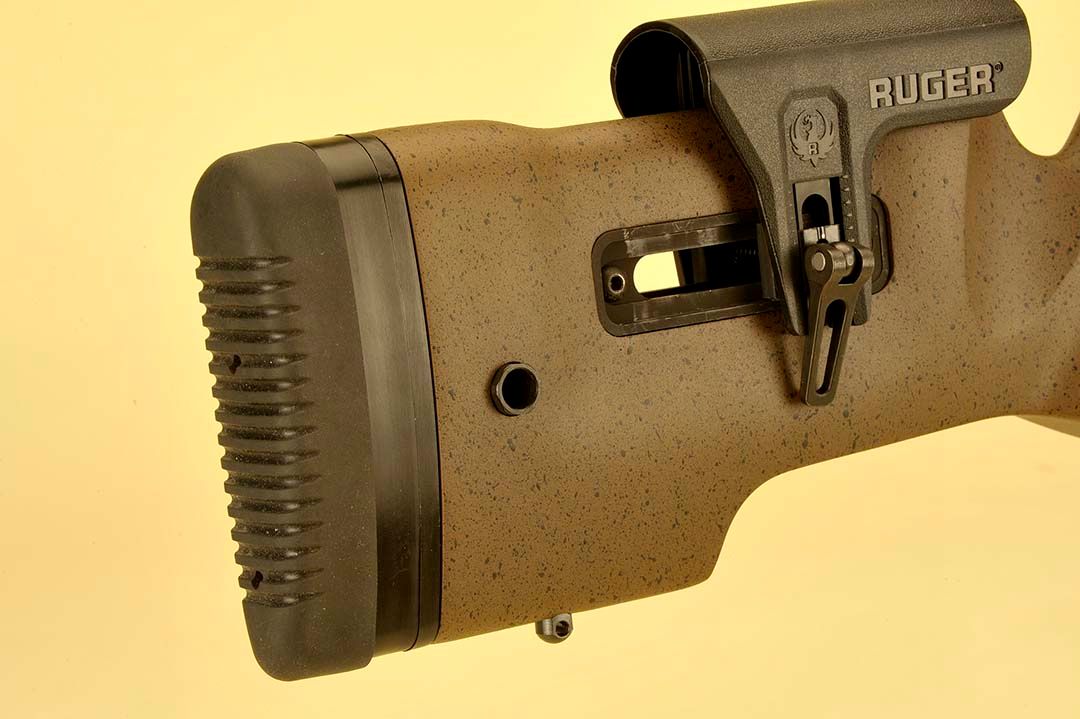
In reviewing literally hundreds of rifles over my journalistic lifetime, it is always interesting to see how the field widens with various manufacturers when it comes to the designs of the stocks, actions and other details that make a rifle. With the Ruger Long Range Target rifle, peering inside the stock shows that it is a laminated composite type of stock using thin slices of wood to make up the profile of this gun. It is then coated with a tough weather-resistant finish worthy of whatever Mother Nature can throw at it. The forearm is long, wide (almost 2½ inches wide) and needing copious amounts of upward pressure to move it even a millimeter towards the free-floated barrel.
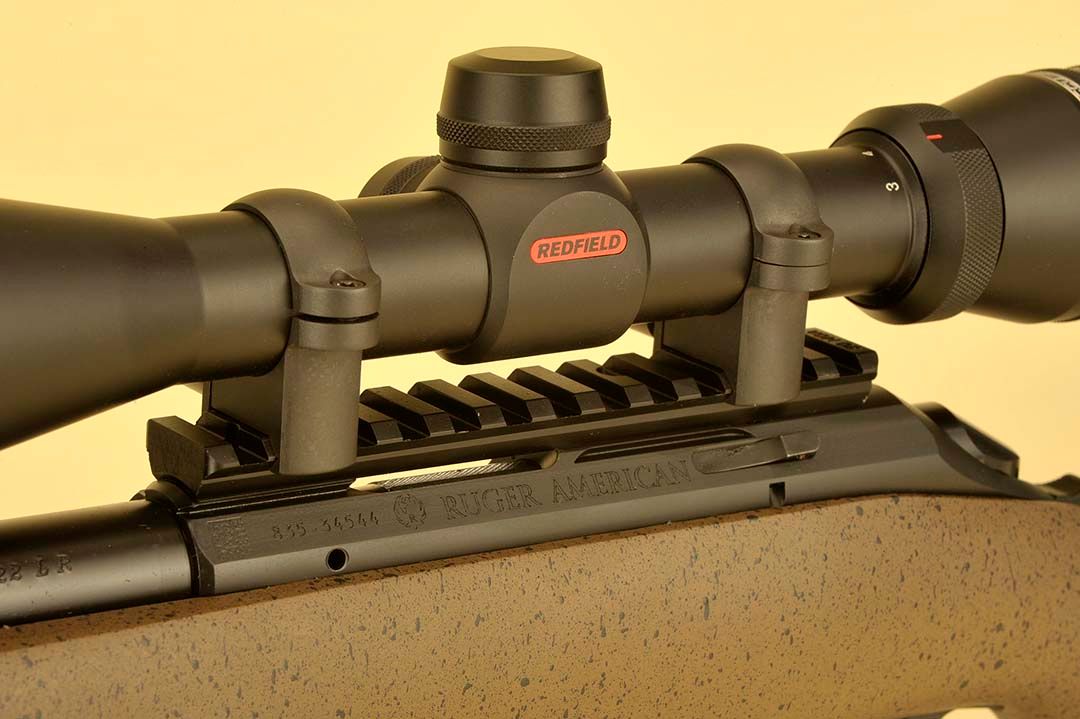
The forearm is equipped with a full length M-Lok rail installed with a quick release unit up front (adjustable for either side of the stock) with two mounted at the rear of the stock. The recoil pad is set at a 13½-inch length of pull and equipped with spacers to tailor this rifle to a shooter’s personal shooting style. This pad is very aggressive and does not move once placed on the shoulder.
Seemingly made for the serious varmint or target shooter, the pistol grip is nearly vertical for prone shooting, has a moderate swell on both sides and a wide flair for the web of the hand to rest in. There is a pronounced butt hook for a rest at the bench and an innovative cheekpiece, which is adjustable for forward to back, up and down movement. Loosening the thumbnut on the left side allows it to move the unit in either direction, then locking the assembly with a toggle on the right side. Although it takes patience to reposition, both the thumbnut and the toggle are ambidextrous allowing the shooter to move it to the side most convenient for shooting but allow plenty of time to get it back together again as the tolerances are close for reassembly.
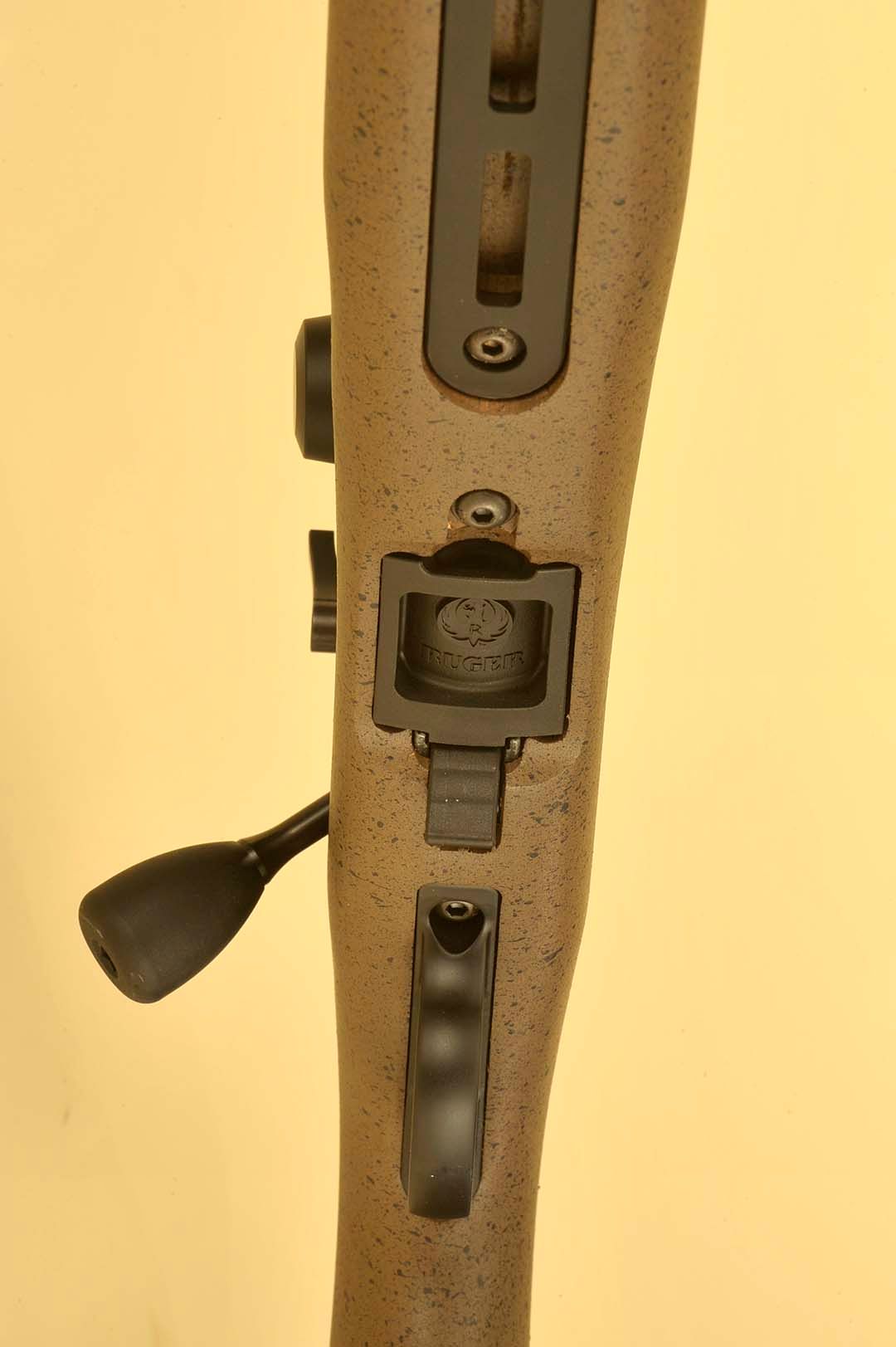
For potential accuracy, Ruger installed an integral pillar with the front of the receiver locking into their proprietary “Power Bedding Integral Bedding Block System.” This is the same two-part system seen on the larger centerfire rifles and on the front of the receiver, a machined in “V” groove mates with an aluminum-bedding block positioned into the stock. When fully assembled, the so-called angled grooves on the receiver are press fit against matching lugs within the stock for a firm steel-to-steel contact. It is so simple and so easy to assemble for the average shooter and since there is no specific torqueing specifications, I found that taking the gun apart and putting it back together a number of times in combination with its free-floated barrel, showed no discrepancy in groups or point of aim at 25 yards. While some have called it a marketing gimmick, for whatever its worth, it works and this is all that matters when you pull the trigger.
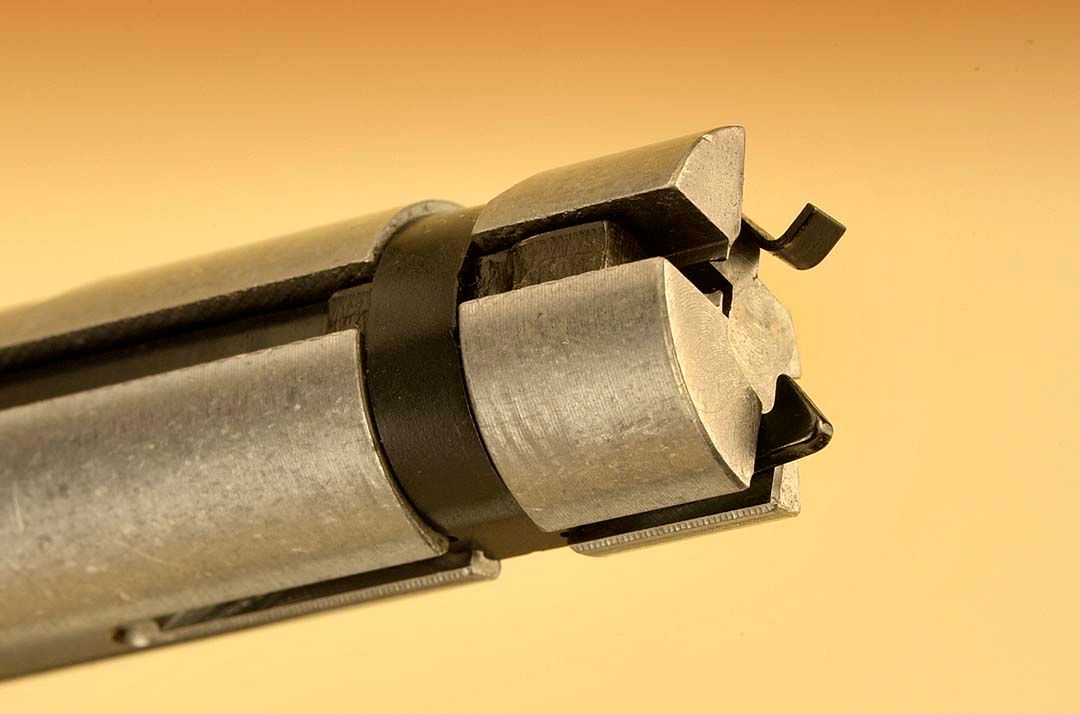
The action is blued carbon steel and comes with a 22-inch bull barrel – just right for the ballistics of the .22 Long Rifle cartridge – with an outside diameter of .890 inch and fitted with a threaded muzzle with a protector for a brake if desired. In all honesty, a muzzle brake on an 8 pound .22 rimfire was never an issue with me, so it was of little interest to install one. The steel bolt handle flairs a bit to the rear and is finished off with a larger than normal aluminum bolt knob for a .22 rifle and when positioned in the closed position, locks into both the base of the receiver and the stock. The bolt operates with the safety on with only a 60-degree throw leaving more than enough room for a full-size scope and eyepiece.
On the bolt face, twin extractors are positioned at 3 and 9 o’clock and with a steel “mechanical” ejector positioned on each Ruger magazine, operation was flawless with the ammunition I used in the tests. The steel bolt measures .680 inch across; finish is left in the white and smooth in operation. Its release is on the left side and allows the bolt to be removed regardless of the cheekpiece position when the gun is on safe and without a traditional pull of the trigger as standard on other rimfire rifles to back it out of the receiver.
The Ruger Marksman Adjustable trigger came from the factory at just over 4 pounds with just a hint of travel before the sear broke, and although I had the temptation to tinker with it, the pull felt precise and clean so I left it that way for testing. In praise of Ruger, the safety is mounted on the tang – perfect for both right- and left-hand shooters and a gold star for Ruger for placing it there.
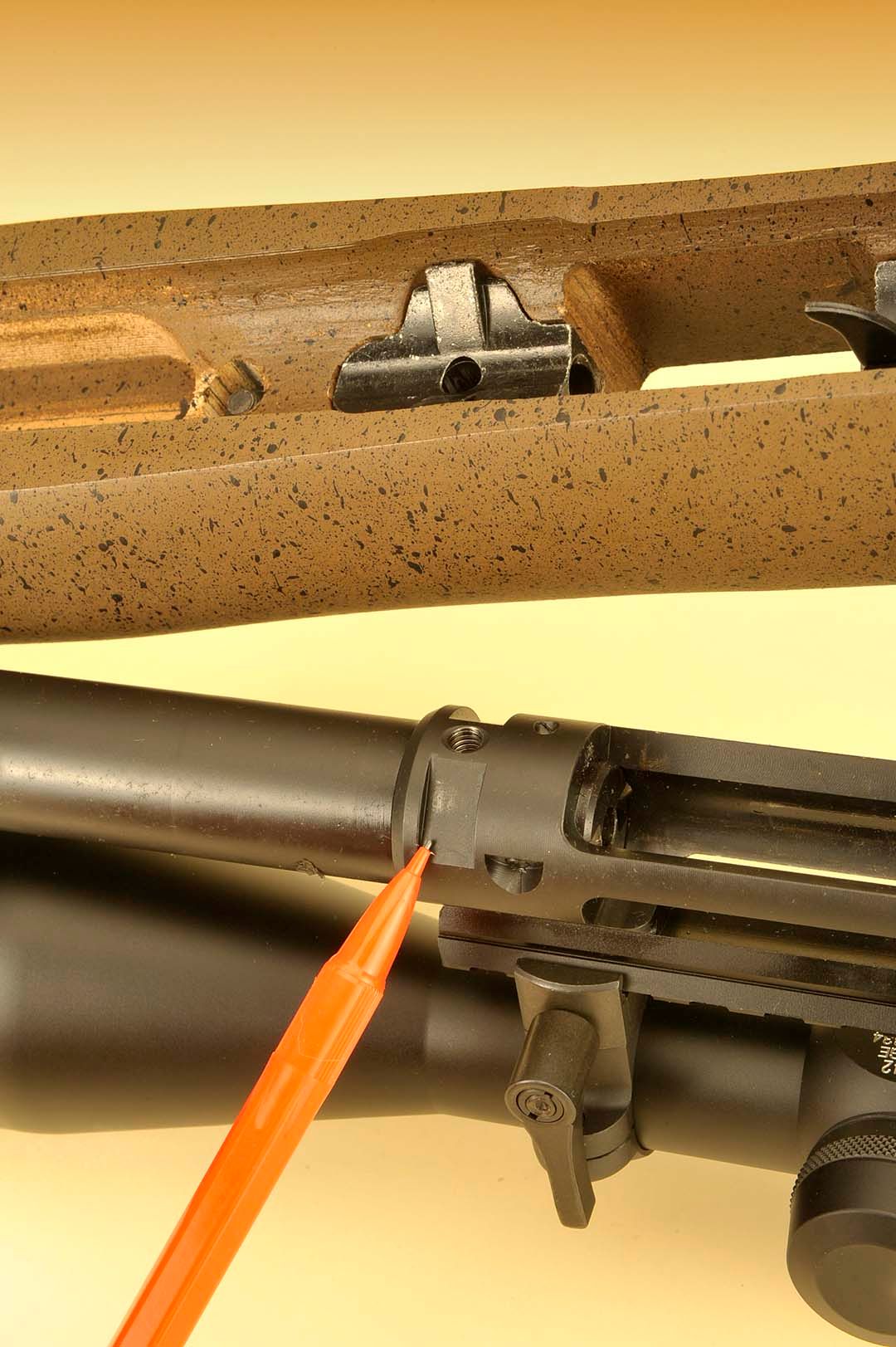
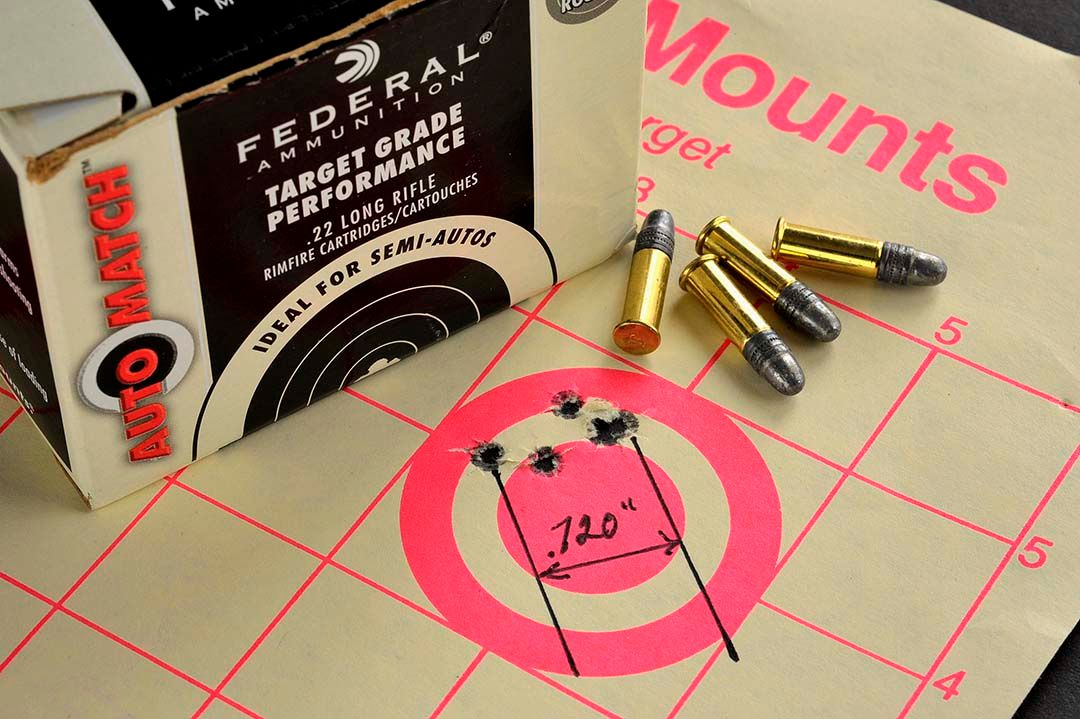
The gun comes with a 10-round Ruger BX-1 magazine and with an extended lever in front of the steel trigger guard is easy to access and load. Like other Ruger rifles, it accepts all 10/22-type magazines, including the optional extra capacity BX-15 (15 rounds), BX-25 (25 rounds) and BX-25x2 (25 rounds times two) curved clips for extended shooting sessions.
When it came to range testing, I have to apologize to the fact with the shelves bare of newer ammunition in all of the stores I visited; I had to dig into my stash of rimfire ammunition. While most of the rimfire ammunition does not change over the years, I still like to use up-to-date ammunition, but alas, nothing was available with COVID-19 going on, so I resorted to the most recent additions in my gun room.
Settling into the rifle on the bench, I found there had to be a shooter behind the design of this stock. With the scope rail installed on the rifle (another Ruger added value feature), I found a set of detachable rings to which I mounted a Redfield Revenge Hunter 3-9x 40mm scope to finish out the rig. The pistol grip felt good from the bench position and with just a minute adjustment of the cheekpiece, my eye hit the crosshairs dead-on and I was ready to go. In sighting-in the gun, the trigger was consistent concerning the pressure needed to engage the sear the same from shot-to-shot. Just an idea here, and not necessarily a criticism, but I think the moveable cheekpiece could do with just bit of some dishing inward for comfort, especially at the top where it seems to make contact with your cheekbone. Other than that, I thought the ergonomics of the stock designers burned a lot of midnight oil, and should fit the majority of shooters out there very well.
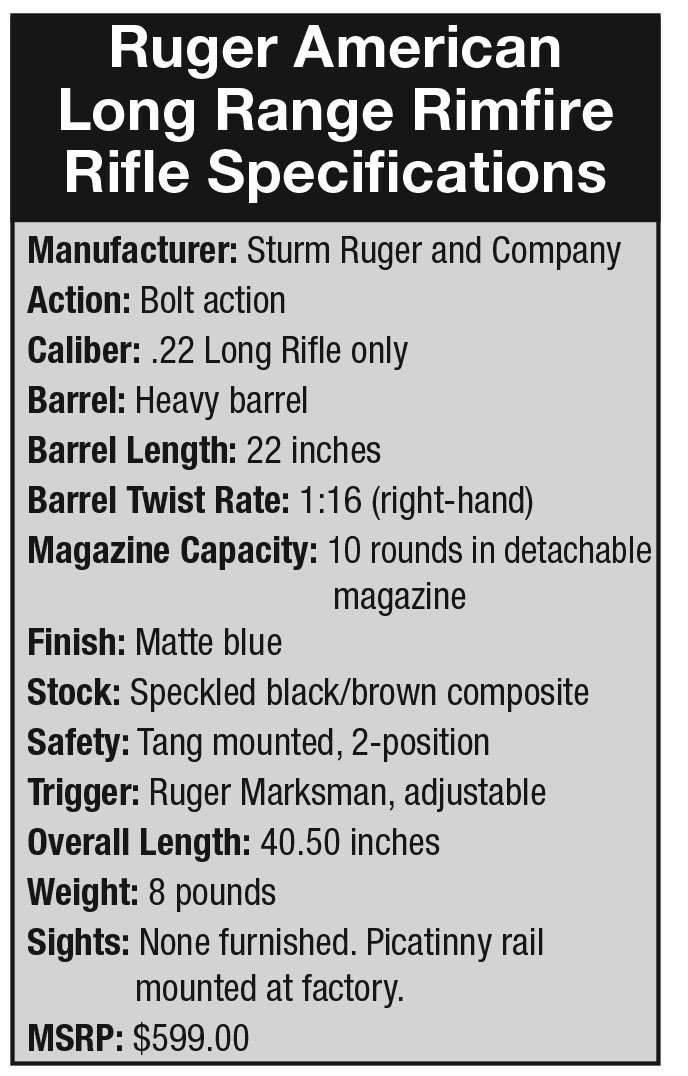
At the range, this rifle was a pleasure to shoot from a braced position on the bench. During the first box of ammunition, the action was a little stiff in the bolt travel, but it did smooth out as the shooing wore on. There was just a hint of breeze from my left, but not enough to hamper my accuracy attempts, so I shot targets at both 25 and 50 yards in five-shot groups. At the shorter distance, the Federal Target Grade ammunition provided the best group at .720 inch with the Browning Performance .22’s hitting under an inch at 50 yards with the highest velocity during this morning shoot.
To me, there is nothing like a full-sized scope mounted on any rimfire rifle. To this end, I picked this scope and rings as it matched the color of the metalwork to a tee. With the adjustable eyepiece, I was able to keep the target focused at 25 yards, while at 50 yards and at just a six in magnification, the scope proved its worth in clarity and sharpness.
In summary, this Ruger Long Range rifle has yet to see its potential in my hands, but with the summer coming, I will stretch it out to longer distances. Overall, and with the exception of the cheekpiece, I found the gun a real pleasure to use and shoot with no expense in accuracy. Over my career, I have owned, tested and shot dozens and dozens of rimfire rifles and to quote someone whom I forgot said, “I never met a .22 rifle I did not like!” The gun has the right weight for both bench and field use and with the side mounting of any sling would be comfortable carrying to the “north forty” on a balmy summer day. With the new addition of an oversized lever for the removal of the magazine and the larger bolt knob, for value, build and accuracy, this is great rifle to have in your battery. By the way, if you really like this type of stock for more of your shooting duties, in the Hawkeye section of the Ruger rifles, there is the same stock with an extended magazine available in a wide variety of centerfire cartridges.
In any cartridge, this Ruger Long Range variant is a winner!


